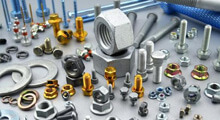At present, there are more than 100 chemical elements known, and there are about 20 chemical elements that can be encountered in steel materials commonly used in industry.
For the special steel series of stainless steel formed by people's long-term struggle with corrosion, there are more than a dozen elements commonly used. In addition to the basic element of steel, iron has the greatest impact on the performance and structure of stainless steel. The elements are: carbon, chromium, nickel, manganese, silicon, molybdenum, titanium, niobium, titanium, manganese, nitrogen, copper, cobalt, etc. Except for carbon, silicon, and nitrogen, these elements are all elements in the transition group of the periodic table of chemical elements.
The influence and effect of various elements on the performance and structure of stainless steel
1. The decisive role of chromium in stainless steel: There is only one element that determines the properties of stainless steel, which is chromium, and each type of stainless steel contains a certain amount of chromium. So far, there is no chromium-free stainless steel. The fundamental reason why chromium has become the main element that determines the performance of stainless steel is that the addition of chromium as an alloying element to steel promotes its internal contradictory movement to help resist corrosion damage. This change can be explained from the following aspects: ¢Ù Chromium increases the electrode potential of the iron-based solid solution ¢Ú Chromium absorbs iron electrons to passivate the iron, which is a phenomenon in which the corrosion resistance of metals and alloys is improved due to the blocking of the anode reaction. . There are many theories that constitute passivation of metals and alloys, mainly including film theory, adsorption theory and electron arrangement theory.
2. Nickel plays a role in stainless steel after it is combined with chromium. Nickel is an excellent corrosion-resistant material and an important alloying element for alloy steel.
Nickel is an element that forms austenite in steel, but for low-carbon nickel steel to obtain a pure austenite structure, the nickel content must reach 24%; and only when the nickel content is 27% can the steel be resistant to certain media. The corrosion performance changes significantly. Therefore, nickel cannot constitute stainless steel alone. But when nickel and chromium exist in stainless steel at the same time, nickel-containing stainless steel has many valuable properties. Based on the above situation, the role of nickel as an alloying element in stainless steel is that it changes the structure of high chromium steel, so that the corrosion resistance and process performance of stainless steel can be improved to some extent.
3. Although manganese and nitrogen can replace nickel-chromium-nickel austenitic steel in chromium-nickel stainless steel, although there are many advantages, in recent decades, due to the large-scale development and application of nickel-based heat-resistant alloys and heat-strength steels containing less than 20% nickel, And the increasing development of the chemical industry requires more and more stainless steel, and nickel deposits are small and concentrated in a few areas, so there is a contradiction between nickel supply and demand in the world. Therefore, in the fields of stainless steel and many other alloys (such as steel for large castings and forgings, tool steel, heat-strength steel, etc.), especially in countries where nickel resources are relatively scarce, the science of saving nickel and substituting nickel with other elements has been extensively carried out. In research and production practice, there are more researches and applications in this area that replace nickel in stainless steel and heat-resistant steel with manganese and nitrogen.
In improving the corrosion resistance of steel, manganese has little effect. For example, the manganese content in steel changes from 0 to 10.4%, and it does not significantly change the corrosion resistance of steel in air and acid. This is because manganese has little effect on increasing the electrode potential of iron-based solid solution, and the protective effect of the formed oxide film is also very low, so although there are austenitic steels alloyed with manganese (such as 40Mn18Cr4, 50Mn18Cr4WN, ZGMn13 steel Etc.), but they cannot be used as stainless steel.
The role of manganese in stabilizing austenite in steel is about one-half that of nickel, that is, the role of 2% nitrogen in steel is also stabilizing austenite, and the role is greater than that of nickel. For example, in order to obtain austenitic structure in steel containing 18% chromium at room temperature, low-nickel stainless steel with manganese and nitrogen instead of nickel and nickel-free chromium-manganese-nitrogen stainless steel have been applied in industry at present, and some It has successfully replaced the classic 18-8 chromium-nickel stainless steel.
4. Titanium or niobium is added to stainless steel to prevent intergranular corrosion.
5. Molybdenum and copper can improve the corrosion resistance of certain stainless steels.
6. The influence of other elements on the performance and structure of stainless steel. The above nine main elements have influence on the performance and structure of stainless steel. In addition to the elements that have greater influence on the performance and structure of stainless steel, stainless steel also contains some other elements. . Some are the same as general steel as impurities, such as silicon, sulfur, phosphorus and so on. Some are added for specific purposes, such as cobalt, boron

 Ali Mall
Ali Mall- Online Contact:




